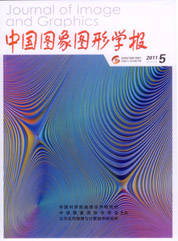
基于曲面曲率和RLDA的3D掌纹识别方法
摘 要
提出一种新的3D掌纹识别方法,利用掌纹曲面的3D曲率信息提高当前2D掌纹识别算法的精确度和鲁棒性。首先因曲率是3维物体的重要表征,能够与视点无关地表现曲面的局部形状,不管手掌发生旋转或者平移,曲率信息都是稳定的,因此提取3D掌纹的均值曲面曲率特征来刻画3D掌纹的曲面特征;继而获得3D掌纹映射到2D空间上的灰度图像——均值曲率图像(MCI);然后在获得的MCI上采用正则化的LDA(RLDA)方法来进行二次特征抽取,以消除传统线性判别分析(LDA)应用于识别时存在的小样本问题和优化准则函数并不直接与识别率相关等问题。实验结果表明,所提出的方法相比与传统的LDA、PCA、ICA、LPP等方法有更高的精度和速度。
关键词
3D palmprint recognition based on surface curvature and RLDA
(Shenzhen Graduate School, Harbin Institute of Technology, Sheznhen) Abstract
This paper explores a new 3D palmprint recognition mehthod. We aim to improve the accuracy and robustness of existing 2D palmprint authentication using 3D palmprint curvature information. First, the curvature is an important characterization of 3D Objects, which can present the shape of local surface has nothing to do with the view point. No matter how the palm rotates or translates, the curvature is stable. So the mean curvature of 3D palmprint is used to depict the surface feature of 3D palmprint. Next, we obtain the surface curvature map as 2D gray images mean curvature image (MCI). Then, using the RLDA method extracts the second feature in order to eliminate the existing problems of traditional LDA—small sample size problem and the problem that optimization criterion function is not directly related to recognition rate. Experiments, show method presented in this paper has a higher accuracy compared with traditional LDA, PCA, ICA and LPP etc.
Keywords
|



 中国图象图形学报 │ 京ICP备05080539号-4 │ 本系统由
中国图象图形学报 │ 京ICP备05080539号-4 │ 本系统由